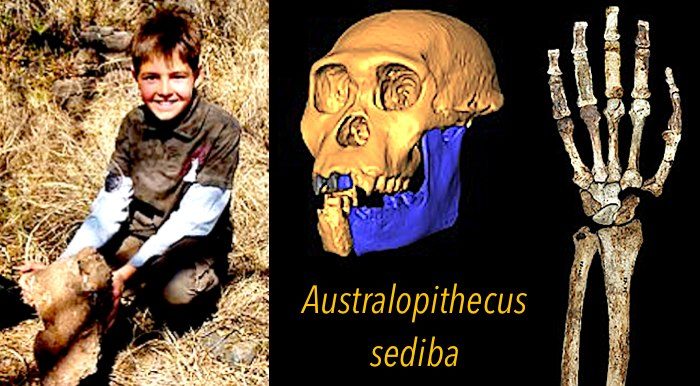
The fossils of Australopithecus sediba were found in 2008 after Matthew Berger stopped to examine the rock he tripped over while following his dog near what is now the Malapa Fossil Site in South Africa.
The subsequent discovery of the 2-million-year-old adult female and juvenile male remains in the "Cradle of Humankind" set off contentious debate in the scientific community. New research confirms the species is closely related to the Homo genus and fills a key gap in humankind's history between early humans and our more apelike predecessors.
Scientists writing in the journal PaleoAnthropology found that the species is the bridge between the 3-million-year-old "Lucy" or Australopithecus afarensis and the "handy man" Homo habilis, which used tools between 1.5 and 2.1 million years ago.
The study, which describes the new species' anatomy in detail, found that Au. sediba is unique, but shares similarities with its neighbor Australopithecus africanus and early members of the genus Homo "suggesting a close evolutionary relationship."
"Our findings challenge a traditional, linear view of evolution. It was once thought that a fossil species a million years younger than Lucy would surely look more human-like," explained Jeremy DeSilva, an associate professor of anthropology at Dartmouth and co-author of the study, in a press release.
"Instead, what we're witnessing here are parallel lineages, illustrating how different hominin experiments were unfolding early in our complex evolutionary history," DeSilva continued.
Au. sediba was able to walk on two feet, "but also spent significant time climbing in trees, perhaps for foraging and protection from predators," the study found. Its hands were capable of both powerful gripping needed for climbing and "precision manipulation."
"This larger picture sheds light on the lifeways of Au. sediba and also (whether directly or indirectly) on a major transition in hominin evolution," the press release stated.



My ass & buttermilk.
R.C.